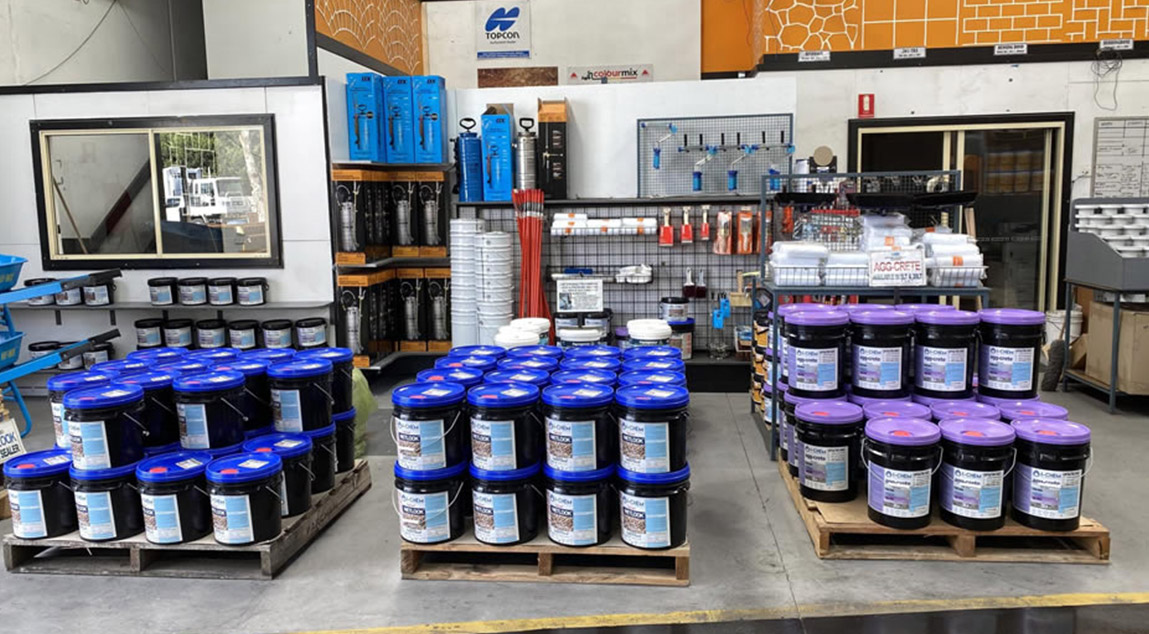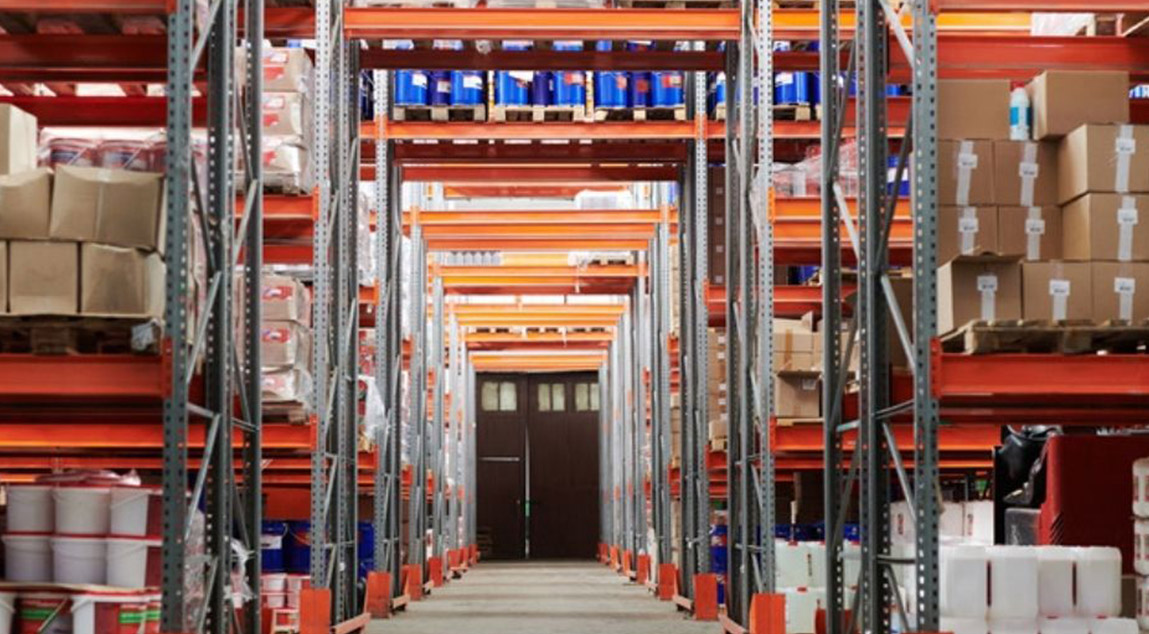Introducing Exposed Aggregate Concrete: Top Features and Benefits

If you’re considering designing your dream patio or restoring the outline of your pool, you want to get the facts right regarding the type of concrete you’re using.
Whether you’re aiming to boost your home’s value or just feel like redecorating, aggregate concrete has several advantages. So, what is exposed aggregate concrete, what are its popular uses and how can you use it to enhance the design elements of your backyard?
Australian Slate-Crete Supplies are the number one provider of exposed aggregate supplies in Melbourne, with over 25 years in the business. We are here to provide expert advice on how to achieve the best results, first time.
What is Exposed Aggregate Concrete?
Have you often experimented with traditional concrete, but felt it lacking? Exposed aggregate concrete is the solution! Put simply, exposed aggregate concrete is a textured surface used to decorate outdoor spaces such as your driveway, patio, sidewalk, or newly installed pool. It can transform bland spaces, giving them a fresh look.
Compared to traditional concrete, aggregate is unique in style and texture, as it is stripped back to reveal the more natural qualities of stones, such as quartz. Created by removing surface lines from concrete, it is an amazing alternative to other concrete types and holds many benefits.
According to Science Direct, it takes about a week to cure this concrete to 75% strength and 28 days for it to achieve full strength. All in all, the wait is worth it.
Origins of Exposed Aggregate
Natural rocks form in many locations, and after quality tests, are safe to use for construction purposes. Here we’ll cover what type of rocks can be used to create aggregate materials.
Natural Earth
Available in a wide variety of colours and shapes, aggregate materials stem from three categories of rock types from the earth: metamorphic, sedimentary, and igneous. When forming aggregate concrete, mineral properties can determine how they will form as a pavement material.
When rocks are exposed to high levels of heat or high pressures due to lava or magma, the metamorphic process creates rocks such as marble, quartzite, slate, gneiss, and more.
Sedimentary rocks are often found in lakes and oceans, forming rocks over time due to weathering or erosion. Rock types can include limestone, sandstone, shale, coal, rock salt, and so much more.
Igneous rocks are another process entirely, forming when molten rock crystallises and solidifies. Igneous rock examples include obsidian, basalt, granite, rhyolite, and many others.
Manufactured
Many clients have visions in terms of design elements, and so manufactured aggregate is a common choice. Rocks are mechanically crushed by stone-crushing machines and cut down to usable sizes.
Classifications of Aggregate
Different types of aggregates are used in dozens of industries, and the look of the aggregate surface is determined by the types and size of aggregates processed.
Fine Aggregates
Naturally appearing in river banks due to rocks disintegrating, fine aggregates are used as a filler material between coarser aggregates or are often used in plastering-based work.
Coarse Aggregates
Disintegrated rocks are crushed, helping produce the shape of concrete and increasing concrete strength.
Classifications of Aggregate Shape
Rounded Aggregates
Although rounded aggregates cannot lock in with high-density concrete, it has a high workability rate and is easy to find on riverbanks or seashores.
Irregular Aggregates
With this irregular shape forming due to friction, the likelihood of this shape bonding with others is very low as it creates larger gaps. It results in a very natural and geometric appearance, popular in flooring.
Angular Aggregates
Due to being angular, this aggregate shape is easily locked into place, producing high-strength concrete. This makes it perfect for high traffic applications such as warehouse flooring.

Benefits of Exposed Aggregate Concrete
What are the advantages of aggregate concrete besides its sleek visual appearance?
Durable material
If your aim is durability, exposed aggregate concrete surfaces are a great solution. Compared to brushed or traditional concrete, it is tougher, damage-resistant, and has a lower cement-to-water ratio. Aggregate is a long-term solution to a yard that needs a long-awaited renovation!
Cost-effective and low maintenance
When designing your home, there’s often a concern in terms of cost. Decorative aggregate can ultimately save you from maintenance costs as it only requires regular cleaning. As a bonus benefit, the installation process is fast for large areas. Weeds, plants, and moss don’t need to cross your mind.
Easy to customise
Planning to prepare a perfect patio by Christmas? Compared to plain concrete, aggregate concrete is popular for personalising your spaces with a range of designs and materials. You have a wide range of options to make your space feel more like home.
Improved traction
If you’ve ever slipped on wet concrete, you’ll appreciate the benefits of decorative concrete as it is naturally slip-resistant with its rough texture.
A great choice for driveways, the concrete can also be adjusted to suit your needs, such as adjusting the aggregate particles’ surface texture, shape, and size.
Better home value
Looking to add more value to your home? If you’re weighing up selling in the future, aggregate concrete driveways compared to regular concrete can make your home more attractive to potential buyers.
These driveway types are attractive and more contemporary and according to Panorama Concrete, can increase the value of your home by 10 percent.

Popular Uses of Exposed Aggregate Concrete
As well as numerous benefits and a durable finish, there are dozens of stunning styles that you can achieve throughout your home. Here are some great ways to use exposed aggregate around your home.
Pool decks
Wanting to find a family-friendly option in terms of outdoor play? Natural stones remain a popular choice for surrounding pool decks.
Offering a lovely natural touch, they are highly recommended for being slip-resistant.
Driveways
A modern concrete driveway is bound to impress guests, and aggregate is as durable as it is stylish.
Compared to wooden decking or stone pavers, aggregate is safe for heavy traffic during all weather conditions and can provide a great first impression for guests..
Patios and Outdoor spaces
Tired of traditional concrete for outdoor spaces? If you think it is time to revamp your backyard, decorative aggregate can enhance your end result.
In comparison to flat pieces of concrete, a rounded shape is recommended as it is easier to walk on. An aggregate patio will also last at least 50 years!
Density of Aggregates
Lightweight
As a non-structural, insulating material for concrete surfaces, lightweight aggregate has a higher absorption rate and is a popular choice used for deck slabs, flooring, pipe insulation, and so much more.
Standard
Sand or gravel is considered a normal-weighted aggregate material, and is often a popular option for construction, such as beams or slab concrete.
Different Types of Aggregates Used in Exposed Aggregate Concrete
Seeded aggregate
If you want more options for a decorative surface, seeded aggregate is an alternative. Compared to exposed aggregate, this type is hand seeded and more customised. For example, you may enjoy the appearance of abalone shells around your pool exterior.
Polished aggregate
Ready to beautify your indoor floors? Commonly known as polished concrete or hone aggregate, this popular choice has a smoother surface and is highly polished. Composed of finely crushed quartz, granite, or marble, you can choose between a glistening surface or a more satin finish for indoor spaces.
How to Protect and Beautify Exposed Aggregate
Although decorative concrete doesn’t require a lot of maintenance compared to traditional concrete, it is still handy to know how to keep it protected, especially throughout wild weather.
Exposed aggregate concrete can be maintained with hot water, a power washer, and a concrete-safe cleaner such as acid and cleaning chemicals. This can assist by lifting the oil to the surface, allowing the emulsifier to wash the oil away. As a plus, aggregate only needs to be cleaned every 12-36 months.
Amplify Your Spaces with Aggregate Concrete
At Australian Slate Crete Supplies, we have an affordable option in terms of concrete supplies such as sealers, hand tools, cleaning chemicals, and power tools. Our wide variety is catered to homeowners looking to cut down on costs and dive into the world of DIY concreting.
Our concrete supplies are top quality, safe, and our expert team is always committed to helping you create a better-looking home. Ready to make the switch from traditional concrete? Contact us and get ready for your next building project.
-
 February 4, 2022Sandstone Concrete Stencil
February 4, 2022Sandstone Concrete StencilDo you want to add a touch of luxury and elegance to your concrete projects? If so, then consider using sandstone concrete stencils!
Read More -
 February 4, 2022Gloss Brick Sealer
February 4, 2022Gloss Brick SealerGloss brick sealer is a wonderful material for adding a brilliant shine to your brick slip wall feature.
Read More -
 February 4, 2022Bluestone Concrete Sealer
February 4, 2022Bluestone Concrete SealerIn a broad sense, the term “bluestone” is sometimes used to refer to a variety of stones. It’s a marketing term rather than a geological one.
Read More
